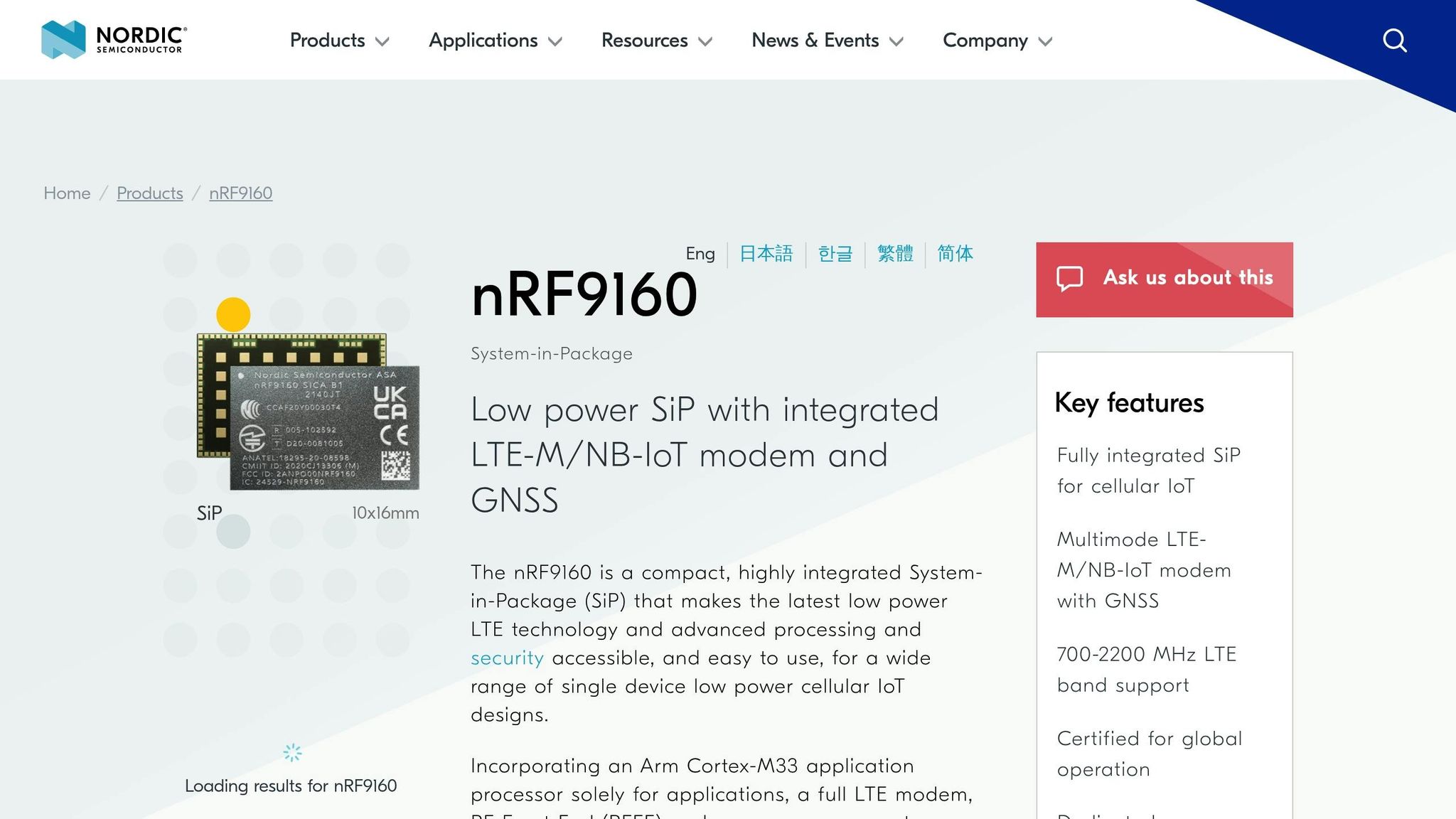
Want to secure IoT devices against cyber threats? Start with reliable firmware updates.
Outdated firmware on IoT devices creates serious security risks like unpatched vulnerabilities, bugs, and compliance issues. A mobile app can simplify and secure firmware updates using Bluetooth or WiFi, ensuring devices stay protected with minimal user effort.
Key Takeaways:
- Why It Matters: 13 billion IoT devices (2023) face risks from outdated firmware, ranking as the 4th most common cause of compromises.
- How to Secure Updates: Use encryption (TLS/DTLS), digital signatures, secure boot processes, and public key cryptography.
- Best Practices: Test updates thoroughly, stage deployments, and implement rollback options for failed updates.
- Mobile App Benefits: Remote updates, real-time progress tracking, and user-friendly alerts.
Secure firmware updates protect IoT devices, reduce vulnerabilities, and ensure smooth performance. Ready to safeguard your devices? Keep reading for a step-by-step guide.
How to perform secure Over-the-Air (OTA) updates? (nRF 9160)

Key Security Methods for OTA Firmware Updates
Securing over-the-air (OTA) firmware updates requires multiple layers of protection. As of May 2024, 70.1% of websites now support TLS 1.3.
Data Encryption Standards
Transport Layer Security (TLS) plays a critical role in ensuring firmware updates are delivered securely. It provides three core protections:
- Privacy: Encrypts all data during transmission.
- Authentication: Confirms the identity of the parties communicating.
- Reliability: Maintains the integrity of the data throughout the process.
For IoT devices that rely on datagram-based protocols, Datagram Transport Layer Security (DTLS) offers similar safeguards for UDP communications. DTLS is particularly suited for devices with limited resources.
"Encrypt software updates. Digitally sign updates after encryption." – Bart Stevens, Senior Director of Product Marketing for Security, Rambus
Update Authentication Systems
These encryption and authentication techniques align closely with advanced mobile app update mechanisms. For example, Rambus enhanced its security measures in March 2023 by integrating encryption with digital signatures. This approach led to a 40% drop in potential security breaches and a 25% boost in device uptime over six months.
Key components for OTA updates include:
| Authentication Component | Purpose | Implementation |
|---|---|---|
| Public Key Cryptography | Update Signing | Server signs with a private key; the client validates using the corresponding public key. |
| Hostname Verification | Server Authentication | Ensures the client connects only to a verified update server. |
| Secure Boot Process | Startup Security | Checks signatures during startup to confirm legitimacy. |
Version Control Protection
Beyond encryption and authentication, maintaining version integrity is equally important. A structured testing framework ensures:
- Updates follow the correct sequence.
- Rollback options are available if needed.
- Manual installation is possible when automatic updates fail.
"Have signed certificates with the public keys of the entities requesting the update." – Bart Stevens, Senior Director of Product Marketing for Security, Rambus
sbb-itb-7af2948
Setting Up Secure Mobile App Firmware Updates
IoT Device Setup Requirements
To securely deliver firmware updates via a mobile app, IoT devices must meet specific configuration standards. By 2023, the number of connected IoT devices has nearly doubled the global population. Key requirements include:
- Bootloader Configuration: Include a bootloader with factory default firmware to enable rollback in case of errors.
- Secure Storage: Allocate space specifically for storing update packages and verification data.
- Network Protocols: Use energy-efficient protocols like CoAP and MQTT for data transmission.
- Public Key Infrastructure: Utilize established public key systems to verify the integrity of updates.
These configurations prepare devices to handle secure and authenticated updates, aligning with broader cybersecurity practices. Once the devices are set up, attention shifts to designing a mobile app that enforces these security measures.
Mobile App Design Elements
The mobile app must balance security with ease of use, ensuring smooth update management. Key features include:
| Feature | Purpose | Implementation |
|---|---|---|
| Version Dashboard | Track current firmware versions | Real-time status display |
| Update Notifications | Alert users to new updates | Push notification system |
| Progress Tracking | Visualize update installation | Progress indicators |
| Error Reporting | Identify and log update failures | Automated error logging |
These features create a secure and user-friendly environment for managing firmware updates.
Update Delivery Process
Delivering updates securely involves a structured process to ensure reliability and maintain protection:
-
Pre-update Verification
Check device health, ensure network stability, and back up configurations before proceeding with deployment. -
Staged Deployment
Divide devices into groups based on firmware versions and hardware specifications. Rolling out updates in stages reduces risks and allows for controlled monitoring. -
Security Implementation
Use end-to-end encryption for update delivery and cryptographic validation to prevent tampering with system images during transmission.
Once the update is installed, the app sends a confirmation to the server or reports any issues encountered during the process.
Update Testing Protocol
A thorough testing protocol ensures updates are secure and effective. Testing phases include:
| Testing Phase | Actions | Success Criteria |
|---|---|---|
| Pre-deployment | Test updates on identical devices | No critical errors |
| Network Resilience | Assess recovery during interruptions | Successful recovery |
| Post-deployment | Monitor device performance | Stable operation validated |
| Security Validation | Simulate potential attacks | Threats successfully mitigated |
These testing steps help identify and address vulnerabilities before updates are rolled out to users.
Security Guidelines for Firmware Updates
Digital Certificate Management
Effective certificate management is key to securing firmware updates. Public key cryptography ensures secure communication between devices and servers. Here’s how it works: the server signs updates with its private key, and devices verify them using the corresponding public key. To strengthen this process, implement a certificate management system with the following components:
| Component | Implementation | Security Benefit |
|---|---|---|
| Public Key Infrastructure | Use digital signatures with the server’s private key | Confirms the authenticity of updates |
| Certificate Authority | Use public keys signed by a trusted CA | Verifies the server’s identity |
| Key Rotation System | Automate expiration and renewal of keys | Reduces risks from outdated credentials |
| Secure Storage | Use hardware-based storage for credentials | Protects private keys from exposure |
Additionally, use TLS for encrypted communication channels and maintain detailed logs of certificate activities to enhance oversight and security.
Security Standards Compliance
Beyond certificate management, adhering to established security standards adds another layer of protection. Frameworks like NIST and ISO/IEC 27001 provide guidelines for cryptographic validation and risk management. Organizations should:
- Document compliance efforts thoroughly.
- Regularly review and update protocols to address new vulnerabilities.
"The CERT Coordination Center recommends automated software updates, at least for security updates."
Update Schedule Planning
Strategic scheduling is crucial for deploying updates securely and efficiently. Different IoT environments require tailored approaches:
| Device Type | Update Approach | Timing Considerations |
|---|---|---|
| Consumer IoT | User-controlled updates | Schedule during low-usage periods |
| Industrial IoT | Automated updates | Align with production schedules |
| Critical Systems | Staged rollouts | Include emergency patch protocols |
To ensure smooth deployments, follow these best practices:
- Keep update packages small and modular to simplify deployment.
- Monitor network bandwidth during updates to avoid congestion.
- Maintain detailed documentation, including error logs and user feedback.
The update system should support quick deployment of security patches while sticking to regular schedules for other improvements. A well-planned schedule ensures updates are both timely and secure.
Conclusion
Key Takeaways
Securing firmware updates through mobile apps requires multiple layers of protection. Here’s a breakdown of the essential components:
| Component | Details | Purpose |
|---|---|---|
| Data Protection | End-to-end encryption and digital signatures | Prevents tampering and ensures updates are genuine |
| Authentication | Transport Layer Security with public key verification | Verifies updates come from trusted sources |
| Testing Protocol | Structured testing and vulnerability assessments | Identifies and mitigates security risks |
| Update Management | Automated scheduling with backup systems | Ensures smooth updates without disruptions |
These strategies form the backbone of secure firmware update solutions.
Sidekick Interactive Offerings

Sidekick Interactive specializes in creating secure, custom mobile app solutions for IoT firmware updates. Our services include advanced Bluetooth integration, robust encryption, tailored security protocols, and extensive vulnerability testing. With a strong track record in healthcare and connected devices, we help organizations defend against cyber threats while ensuring critical updates are deployed seamlessly.
"From a security standpoint, using an old firmware version with published vulnerabilities is an open door for cyber attackers. After exploiting the vulnerability to gain a foothold in the IoT network, attackers can move laterally within the network, jeopardizing the organization’s most valuable assets and data."

